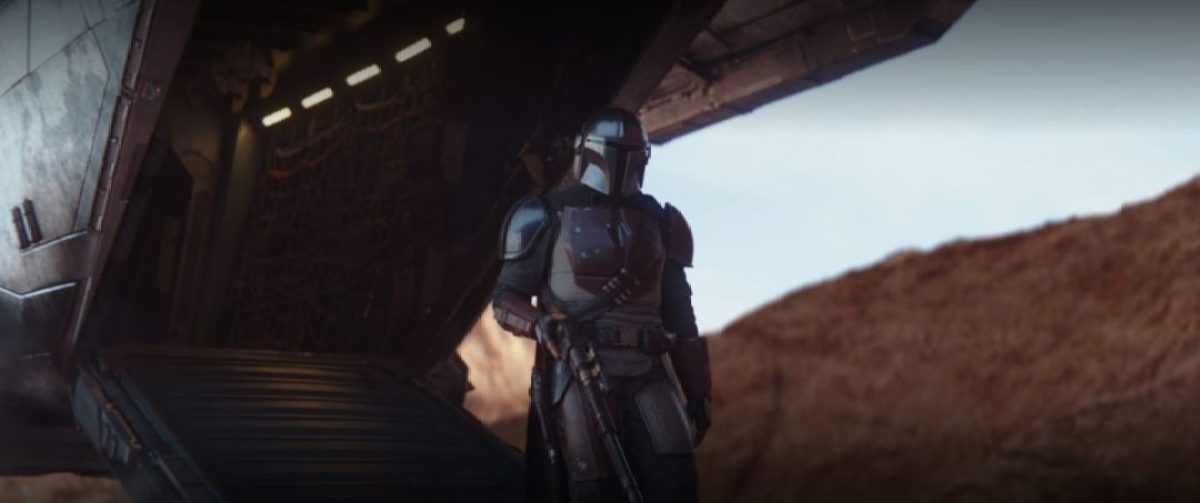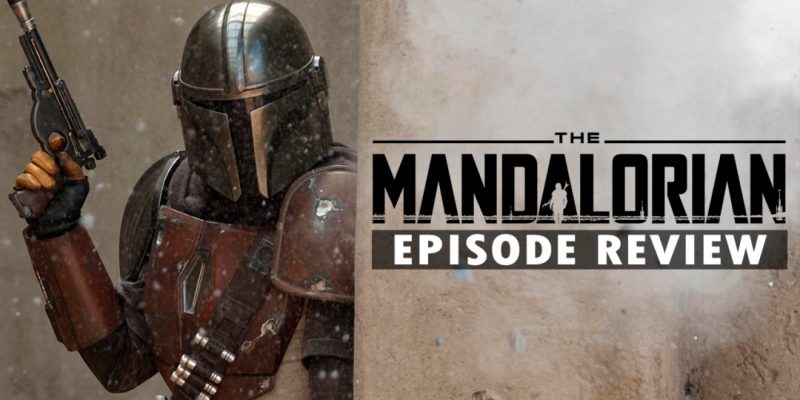This review contains spoilers for The Mandalorian, “Chapter 1.”
After several years of buildup, The Mandalorian is finally here. The Mandalorians were always a fan favorite race in the franchise thanks to members like Boba and Jango Fett, but they never received any main development outside of the Expanded Universe. While most of the Expanded Universe was scrapped thanks to Disney buying Lucasfilm, the prospect of a series spearheaded by Jon Favreau that delved directly into the lore of this beloved race was too enticing to resist. Now with Disney+ finally released to the masses, their service’s “killer app” for launch arguably has to be the premiere of The Mandalorian.
When you look at the plot of “Chapter 1,” it’s basic to the point that it can be explained in a single sentence. Set between the events of Return of the Jedi and The Force Awakens, a client hires a Mandalorian (played by Pedro Pascal of Narcos) to find a target to be taken alive by any means necessary. Sure, this client (played by legendary documentary maker Werner Herzog) has some connections to the now defunct Empire, but a job is a job for the Mandalorian. That’s really all there is to this premiere, but the attention is in the details.
Stylistically, The Mandalorian feels like a sci-fi reimagining of classic Westerns like Sergio Leone’s Dollars trilogy. There’s very little dialogue with most scenes being direct and to the point, leaving little room for interpretation. When the show introduces an action scene, it’s painted as being gruff and dirty. The shootout at the end with the Mandalorian teaming up with IG-11 (played by Taika Waitiki of Thor: Ragnarok) displays very little melodrama, aggressive and without visual spectacle. As of now, The Mandalorian doesn’t seem to be interested in telling a deep and complex narrative but rather delivering tight and focused action set pieces.

Along with the action, audiences are also left to just admire the grand landscapes, sets, and practical creature effects. There are only a handful of locations on display in “Chapter 1,” but they feel so meticulously detailed that it makes this feel like a world that could conceivably exist. When we’re not in bustling cities or the Mandalorian’s tight ship, the focus then shifts to vast and empty wastelands.
It’s during these moments that The Mandalorian is at its strongest, allowing the world to just be. On a desolate ice planet, we see a creature break through the ice and devour a landspeeder while the Mandalorian pays no mind to it. It’s not portrayed as some grand action set piece, as it probably would have been in other Star Wars media, but as a thing that just happens. Little moments like those really emphasize how different this feels from other Star Wars products.
But different doesn’t always mean good. While the execution is solid, it’s still very much a story reserved for the most hardcore of Star Wars fans. While general audiences can somewhat follow the show at the most basic level, the extensive amount of references to the larger mythology can conceivably leave general audiences lost. There’s a difference between having a character make a throwaway line about Life Day and having an entire scene where the Mandalorian talks with another Mandalorian about the fall of their race and acquiring specific metal to melt into armor pieces. Dedicated fans may go nuts over those references, but these obscure details combined with the show’s lack of dialogue can potentially leave viewers with massive gaps in understanding. At its worst, The Mandalorian is indirectly telling its audience to consult Wookieepedia to follow along.

Even then, little ultimately happens in the premiere when you get right down to it. That one-sentence synopsis is meant to hold the plot together for 40 minutes. A good portion of “Chapter 1” follows the Mandalorian learning how to ride a blurrg from a moisture farmer (played by Nick Nolte of Hotel Rwanda) that could have been removed without affecting the plot. He learns how to ride the blurrg, spends a bit of time traveling to his destination, and talks with the farmer about why he helped him. It’s padding in a show that desperately needed more substance, focusing on character development that most likely will not be explored in future episodes.
I’m conflicted on whether or not I enjoyed my time with The Mandalorian. I can see myself enjoying the show more if it picks up on the action and fleshes out its narrative meaningfully, especially given the identity of the Mandalorian’s target. Considering the richness of the time period, there are plenty of avenues that the show can explore. The question now is what kind of show The Mandalorian wants to be. Does it want to be a gritty Western set in the Star Wars universe, or a continuity-focused piece to bridge the gap between film trilogies? The show is at its strongest when it focuses on action, so here’s hoping that the series will firmly plant itself as the True Grit of the Star Wars universe.
